-
Shop
SHOP BY TYPE
SHOP BY USE
SHOP BY PRODUCT
- Offers
- RFX
- Customer Care
- Temps & TipsPopular
- Why ThermapenNew
-
Shop
SHOP BY TYPE
SHOP BY USE
SHOP BY PRODUCT
- Offers
- RFX
- Customer Care
- Temps & TipsPopular
- Why ThermapenNew
Fish is done when it reaches an internal temperature of 63 °C.
This temperature is recommended by the UK Food Standards Agency (FSA) as it will remove all harmful bacteria. The flesh will look opaque, flaky, and cooked through.
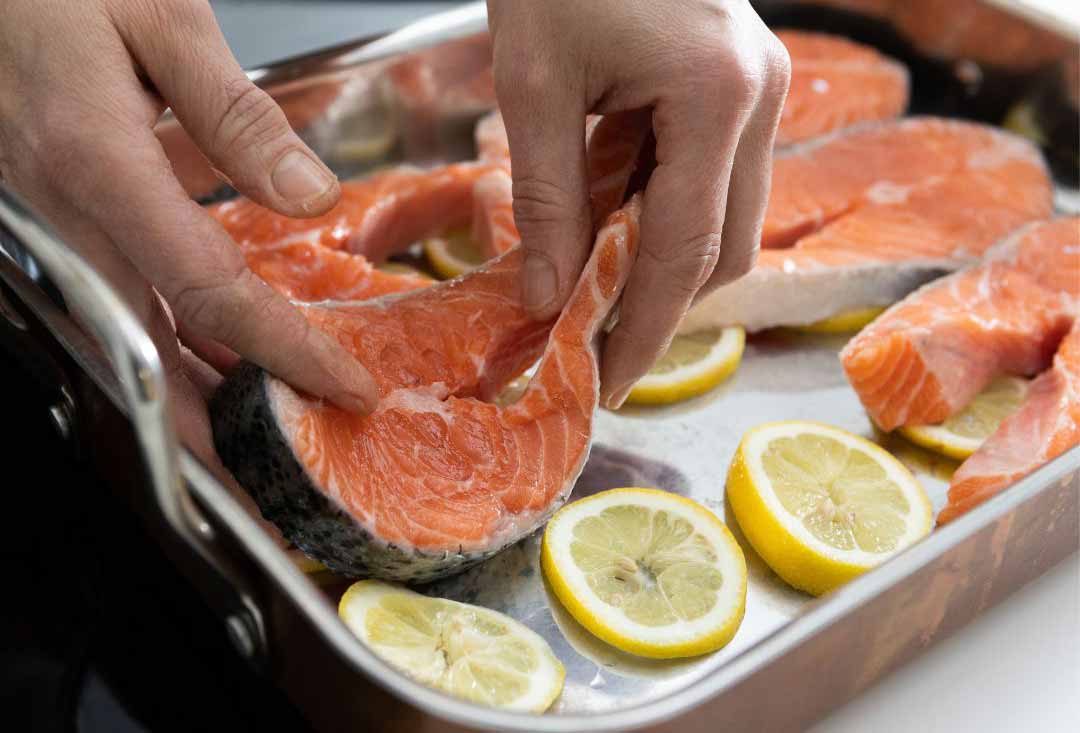
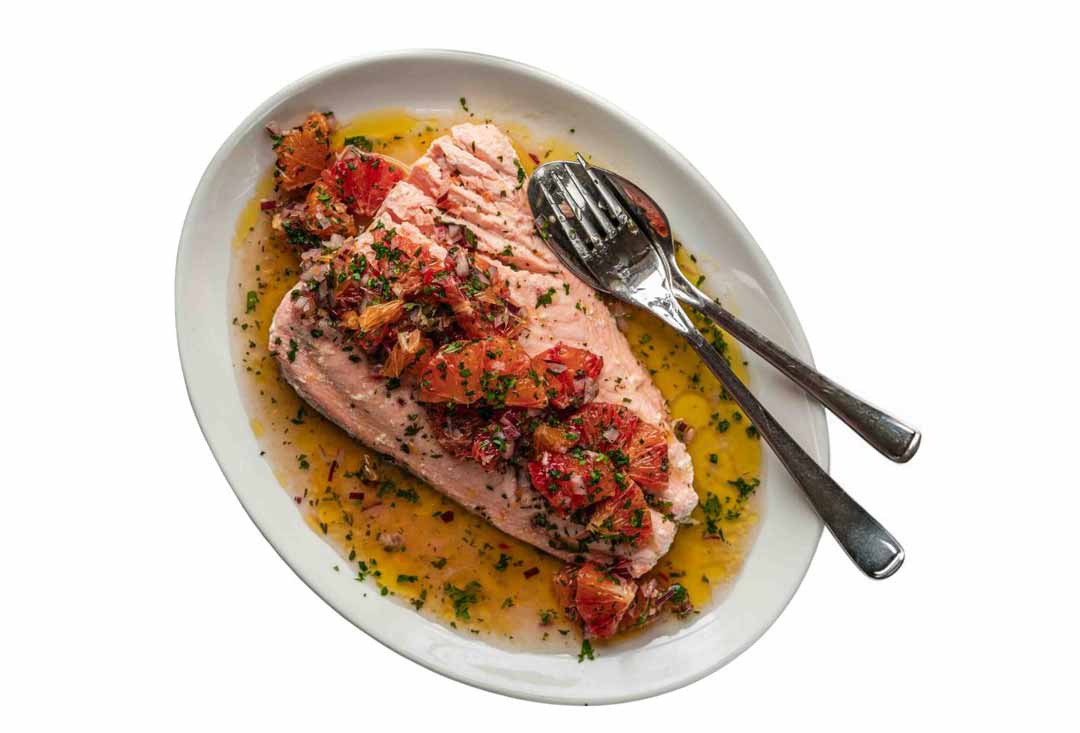
The safe temperature for cooked salmon is 63 °C.
Chefs often like to cook salmon to around 60 °C for a juicier result. Sometimes, they’ll even go as low as 50-55 °C (medium rare to medium).
However, it is only recommended to do this if:
1. It has been frozen for parasite control (often labelled as sushi-grade).
2. They’re confident in their sourcing
It’s being eaten immediately.
3. They’re not serving it to children, pregnant people or those with weaker immune systems.
For food safety, you should usually cook tuna steaks to 63 °C at home.
However, like salmon, tuna can be cooked as low as 50-55 °C, as long as it has been frozen for parasite control, purchased from a trusted supplier, and eaten immediately.
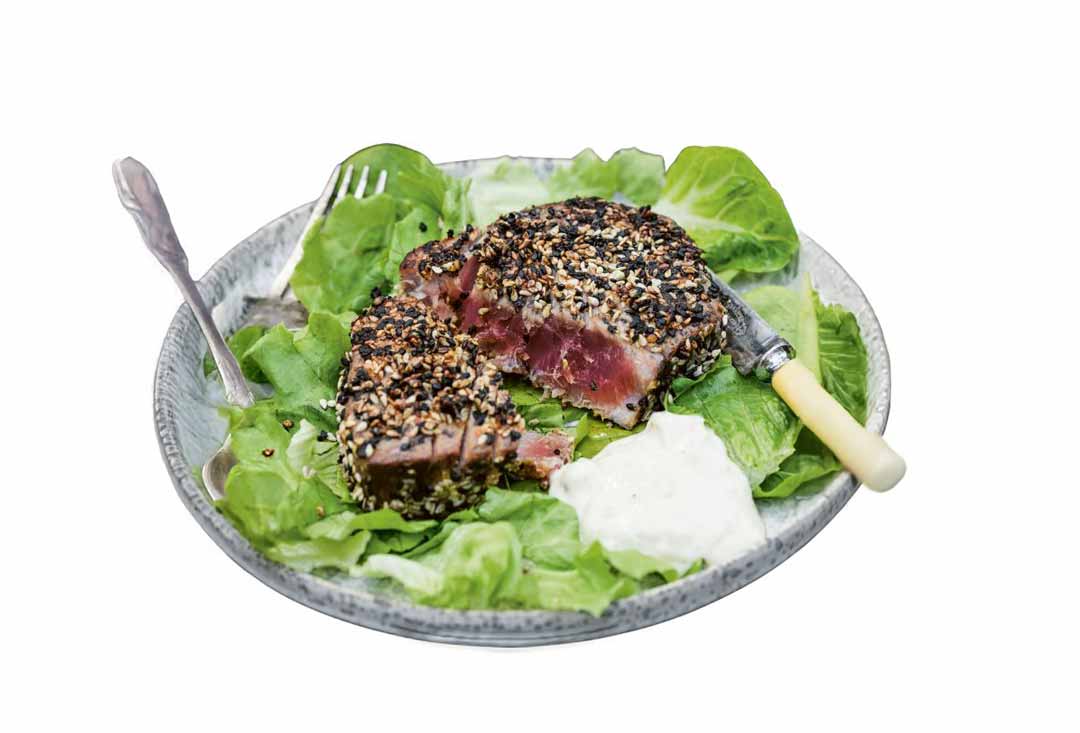
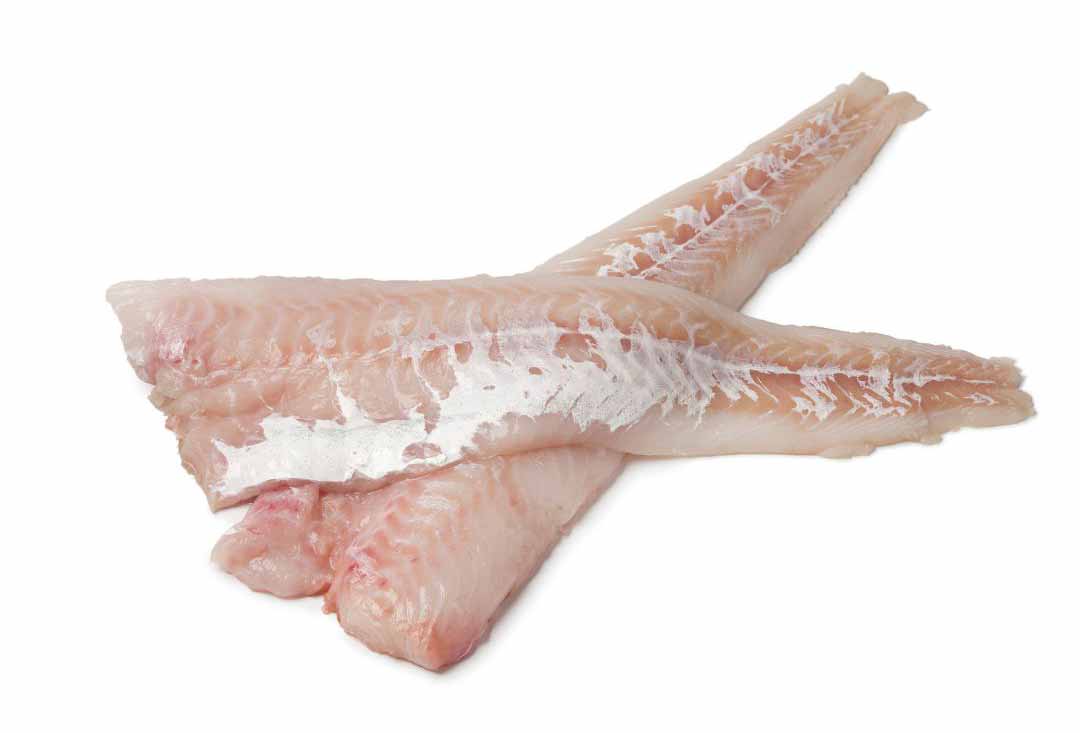
The safe cod and haddock cooked temperature (or any white fish) is 63 °C.
Some chefs will cook white fish to 58–61 °C if it's from a trusted source, has been previously frozen (to kill parasites), and is served immediately to healthy adults. However, most white fish is wild-caught rather than farmed, which means there’s a higher risk of parasites if not frozen beforehand. This makes cooking it to a lower temperature is more risky than with farmed salmon or tuna.
For shellfish like lobster, crab and prawns, the cooking temperature is 63 °C. The flesh should look pearly or white and opaque.
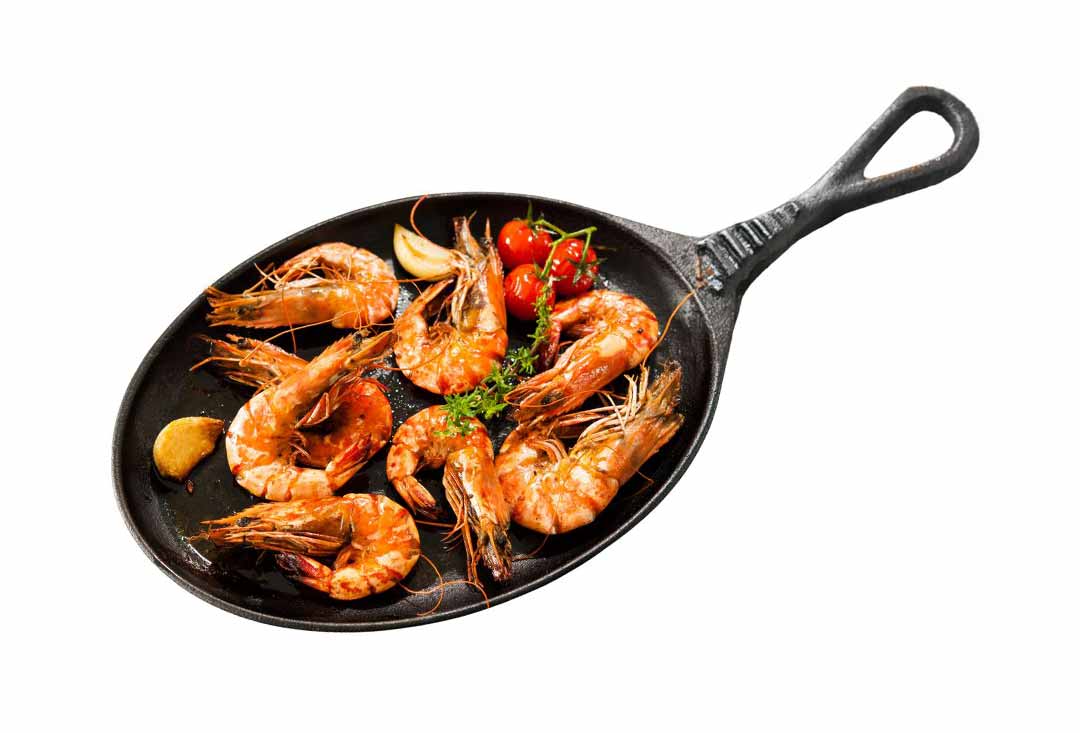
| Fish / Seafood Type | Internal Temperature | Tips |
|---|---|---|
| White fish (cod, haddock, pollock, bass, bream, hake, sole, etc.) |
FSA recommended: 63 °C Moist: 60 °C |
White fish should be opaque, moist, and flake easily with a fork. |
| Oily fish (salmon, trout, mackerel, sardines, arctic char) |
FSA recommended: 63 °C Moist: 60 °C Medium: 55 °C Medium rare: 50 °C |
Use fish from a reputable source if cooking below 60 °C. Eat immediately and don’t serve to vulnerable individuals. |
| Meaty fish (tuna steaks, swordfish, marlin, monkfish) |
FSA recommended: 63 °C Moist: 60 °C Medium: 55 °C Medium rare: 50 °C |
Use fish from a reputable source if cooking below 60 °C. Eat immediately and don’t serve to vulnerable individuals. |
| Crustaceans (prawns, shrimp, lobster, crab, scallops) |
FSA recommended: 63 °C | Flesh should be pearly or white and opaque. |
| Molluscs (clams, oysters, mussels) |
N/A | Cook until shells open during cooking. |
Eating medium-rare fish is never risk-free. But there are ways to enjoy tender medium-rare fish with reduced risks.
Wild fish can carry parasites which are only killed if the fish has been frozen to –20 °C for 24 hours or –35 °C for 15 hours, or by cooking it to 63 °C.
It’s essential to know that the fish is fresh and has been stored properly.
Farmed tuna and salmon carry less risk than wild fish. Store Correctly: Place the fish in the fridge quickly when you get home. Ensure your fridge temperature is between 3 °C and 5 °C. Cook the fish as soon as possible.
Don’t leave the fish sitting out after cooking.
Don’t serve to pregnant people, young children, older adults or those with weakened immune systems.
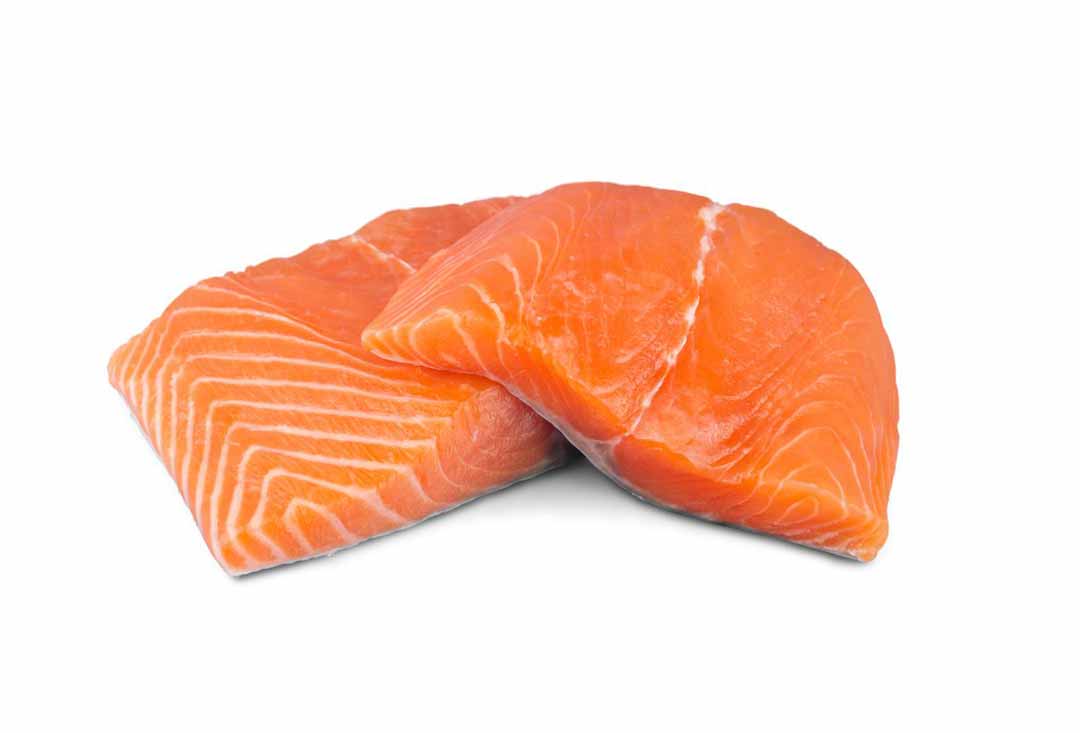
Cooking small or thin fish from frozen works well. It's best to thaw large or whole fish first, as they can become burnt on the outside but undercooked in the centre.
Make sure to thaw frozen fish in the fridge over a drip tray. Thawing at room temperature increases the risk of bacterial growth.
Unlike meat, resting fish doesn't serve much benefit.
Resting meat allows the juices to cool and thicken up, producing a juicier result. Fish muscle has a different structure and little connective tissue, so resting doesn't have the same effect.
However, meaty fish like tuna and monkfish can benefit from a 5-minute rest to make slicing cleaner.
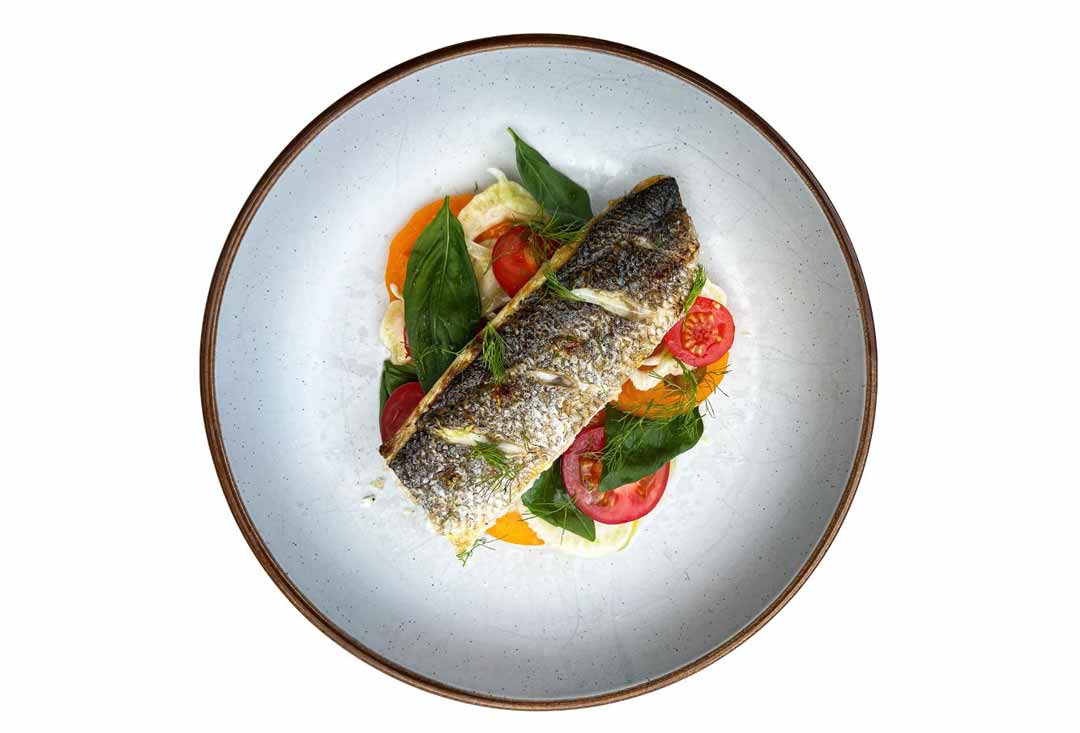
RFX is the ultimate thermometer for wireless meat and pit temperature monitoring. Insert the probe into your meat, select your desired temperature on the app, and track it from anywhere with a WiFi connection. Perfect for cooking thick fish, such as salmon fillets and tuna steaks, on the BBQ, in the oven, or in a pan.
The DOT is the simplest meat thermometer for monitoring fish as it cooks. Insert the probe, set the temperature using the up/down arrows, and wait for the alarm to sound. It’s compatible with our Pro-Series Mini Needle Probe, which is designed for thin, delicate fish like cod. It’s also great for both oven and BBQ cooking.
An instant-read thermometer is essential for checking the temperature of any dish. The RFX or DOT will alert you; Thermapen will ensure perfection throughout. Test everything from baked salmon and batches of prawns to deep-fried cod and grilled tuna. Probe in a few places to ensure your fish is perfectly done all over.
We use third-party cookies to enhance your browsing experience, analyze site traffic, provide live chat and personalise content in accordance with our Privacy Policy.